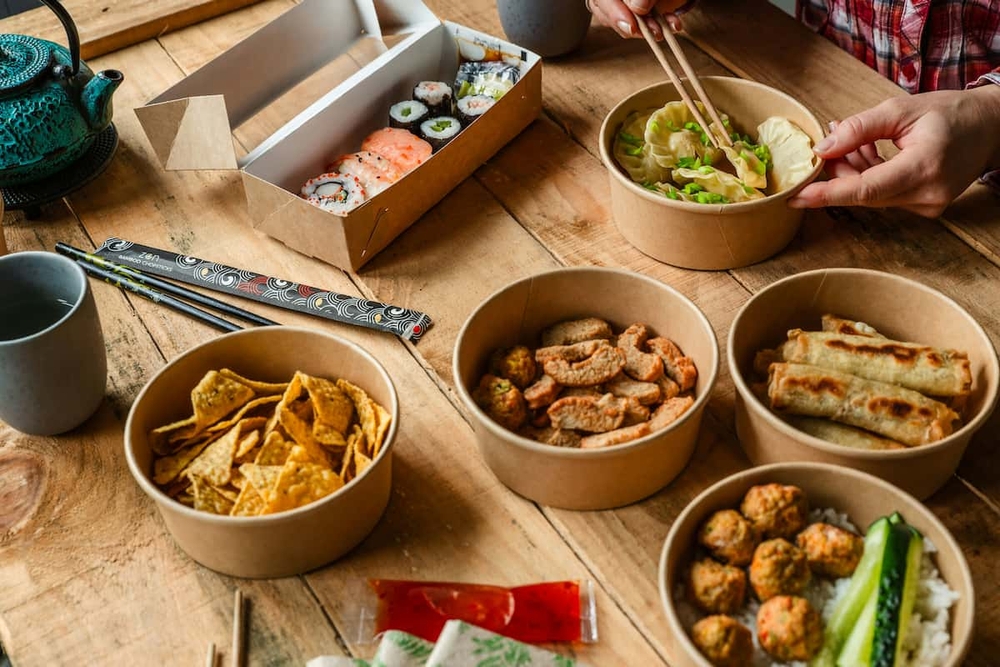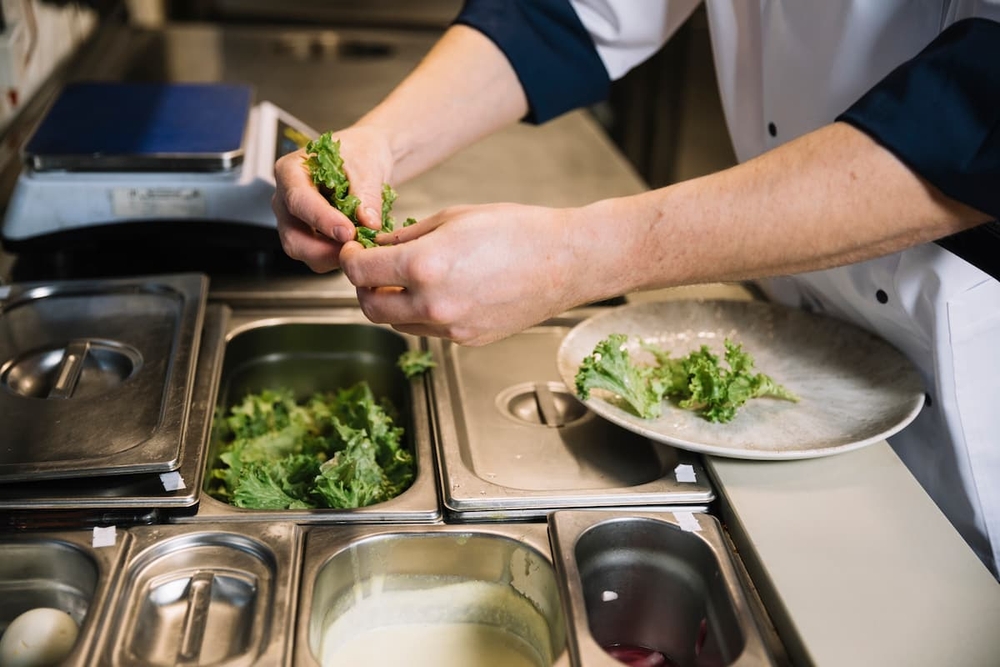How to prevent food waste effectively in high-volume kitchens
Table of Contents
CloudKitchens
How many tacos can be delivered from a 1000sqft restaurant?
The same amount as a 200sqft ghost kitchen.
In the world of commercial food production, every ingredient counts. Whether you’re running a ghost kitchen, a catering hub, or a fast-paced delivery-first restaurant, managing food waste isn’t just good for the planet — it’s critical for your bottom line.
Food waste in high-volume kitchens can spiral quickly without proper systems in place. Between prep waste, spoilage, portioning errors, and overproduction, kitchens can lose thousands of dollars each month if they aren’t operating efficiently. The good news? You can control and significantly reduce food waste by adopting smart practices across your kitchen operations.
This practical guide will explore how to prevent food waste in high volume kitchens using a mix of planning, technology, training, and real-world examples.
Understanding the scope of food waste in commercial kitchens
According to Winnow Solutions, a typical commercial kitchen wastes up to 15% of the food it purchases. That translates to thousands of pounds and tens of thousands of dollars per year. High-volume kitchens face unique challenges: tight service windows, mass prep demands, fluctuating delivery orders, and the constant pressure to deliver consistent quality at scale.
Most food waste in these environments comes from:
- Over ordering ingredients;
- Poor inventory tracking;
- Misjudging demand;
- Inconsistent portion control;
- Spoiled or expired stock.
By recognizing these pain points, kitchens can proactively tackle the root causes before they become expensive problems.
Read more: 5 Restaurant Inventory Management Best Practices
Smart inventory management: the foundation of waste prevention
Inventory control is the first and most important step. Kitchens that lack a structured inventory system often overstock ingredients or forget to use products before their expiration.
Here’s how to tighten inventory processes:
- Adopt FIFO: First In, First Out (FIFO) ensures older stock is used before newer deliveries.
- Track usage trends: Use historical sales data to predict how much of each ingredient is needed daily, weekly, and monthly.
- Label everything: Include dates and clear storage instructions on every item.
- Audit regularly: Conduct weekly inventory checks and monthly deep audits.
Technology like Nutritics or other restaurant inventory software can automate much of this process, giving kitchen managers a real-time dashboard of what’s in stock and what’s being wasted.
Read more: Restaurant Technology: Boost your business with the best technology trends
Accurate forecasting to prevent overproduction
Forecasting is crucial in high-volume kitchens. Overestimating demand leads to surplus food that often ends up in the trash. Underestimating can hurt customer satisfaction. To strike the right balance:
- Use past order data: Look at delivery, dine-in, and catering trends by daypart and season.
- Monitor special events and holidays: Adjust prep plans for big order days.
- Include buffer margins: Add a small buffer, but avoid preparing 20% extra “just in case.”
- Plan for multiple locations: If you manage more than one kitchen or operate through CloudKitchens, for example, to forecast each site individually.
Digital tools like forecasting software and POS analytics can help anticipate sales more accurately, which means better prep plans and less waste.
Staff training and accountability
Food waste prevention isn’t just a management issue — it’s a kitchen-wide culture. Every team member plays a role. From the line cook to the prep team to the kitchen manager, everyone should be trained on the why and how of food waste prevention:
- Teach portion control: Use scales, ladles, and visual aids to ensure consistency.
- Create a waste log: Ask staff to record any food discarded and why. Use this data to spot trends and make changes.
- Engage the team: Run challenges or competitions to reduce waste.
- Cross-train staff: So prep and production can adjust based on demand changes.
Regular check-ins and ongoing training reinforce the importance of minimizing waste, especially during peak production times.
Read more: Mastering demand management: Strategies for handling peak delivery periods
Proper storage and labeling
Storage practices in high-volume kitchens make a big difference. Storing ingredients improperly shortens their shelf life and leads to more spoilage. Here are best practices:
- Use clear, labeled containers: With airtight seals and expiration dates.
- Separate raw and cooked items: To prevent contamination and ensure safety.
- Maintain consistent fridge/freezer temps: Monitor and log temperatures daily.
- Design organized shelving: Put the most frequently used items at eye level.
Color-coded bins and labels help busy teams stay on top of stock rotation and reduce confusion during busy hours.
Portion control and plating consistency
One of the biggest sources of waste in fast-paced kitchens? Over-portioning. Training and standardized tools help keep servings consistent:
- Use pre-measured scoops or portioners for proteins, grains, and sides;
- Display plating guides in prep areas;
- Monitor customer feedback to spot portions that are too large or not being finished.
Consistent portions also improve cost control and food cost calculations, helping you maintain profitability across menu items.
Read more: Mastering restaurant management: how to increase profitability and streamline operations
Use of surplus and food repurposing
Not all “waste” is actually waste. With a little creativity and planning, kitchens can repurpose leftovers and off-cuts:
- Turn vegetable scraps into stocks or sauces;
- Use day-old bread for croutons, stuffing, or breadcrumbs;
- Repurpose extra proteins for limited-time menu items or staff meals.
Apps like Too Good To Go allow kitchens to sell surplus meals at a discount, while food donation programs can help distribute excess to those in need.
Leveraging kitchen tech for waste reduction
Kitchen management software has become a key tool in waste reduction. From smart scales to AI-powered reporting, here are top tech solutions:
- Winnow Vision: Uses image recognition to track what food is being thrown away and why;
- Tenzo: Helps forecast demand and reduce prep waste;
- Nutritics: Tracks food usage, inventory, and expiry;
- Kitchen display systems (KDS): Streamline communication and reduce misfires.
These tools offer visibility into operations that were previously difficult to track, empowering teams to make data-driven waste reduction decisions.
Tracking KPIs and continuously improving
To stay accountable and improve over time, track waste reduction metrics:
- Pounds of waste per day/week;
- Cost of wasted food;
- Top sources of waste;
- Compliance with FIFO and labeling.
Monthly reviews help fine-tune processes and reinforce a waste-conscious kitchen culture.
Build a high-efficiency kitchen with CloudKitchens
In high-volume delivery environments like CloudKitchens spaces, packaging and prep also influence waste. Use eco-friendly, right-sized containers that match portion sizes and avoid excess. Evaluate prep processes to reduce trimmings and unnecessary waste during production.
Preventing food waste in high volume kitchens is not just about saving money — it’s about running a smarter, more sustainable food business. With a combination of inventory control, staff training, smart tech, and efficient workflows, kitchens can significantly reduce waste and boost profits.
Ready to run a more efficient, lower-waste kitchen? Launch your next delivery-first concept with CloudKitchens and take control of your operations from day one.
DISCLAIMER: This information is provided for general informational purposes only and the content does not constitute an endorsement. CloudKitchens does not warrant the accuracy or completeness of any information, text, images/graphics, links, or other content contained within the blog content. We recommend that you consult with financial, legal, and business professionals for advice specific to your situation.
More insights & stories
There’s more where that came from.
Get in the know and check out our additional insights


